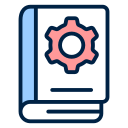Know Your Audience Before a Single Word
List the top situations that bring users to your page: switching from a competitor, starting a new habit, solving a work task. Match each intent with a promise your app can confidently deliver.
Know Your Audience Before a Single Word
Skim competitor reviews to spot recurring frustrations and desired outcomes. Echo those needs in your description with specific improvements, not vague claims. Invite readers to comment which pain point your app should prioritize next.
Know Your Audience Before a Single Word
Choose a voice that reflects your category: calm for finance, energetic for fitness, supportive for wellbeing. Maintain consistency, but modulate intensity in the first three lines to instantly resonate with what your audience values most.



